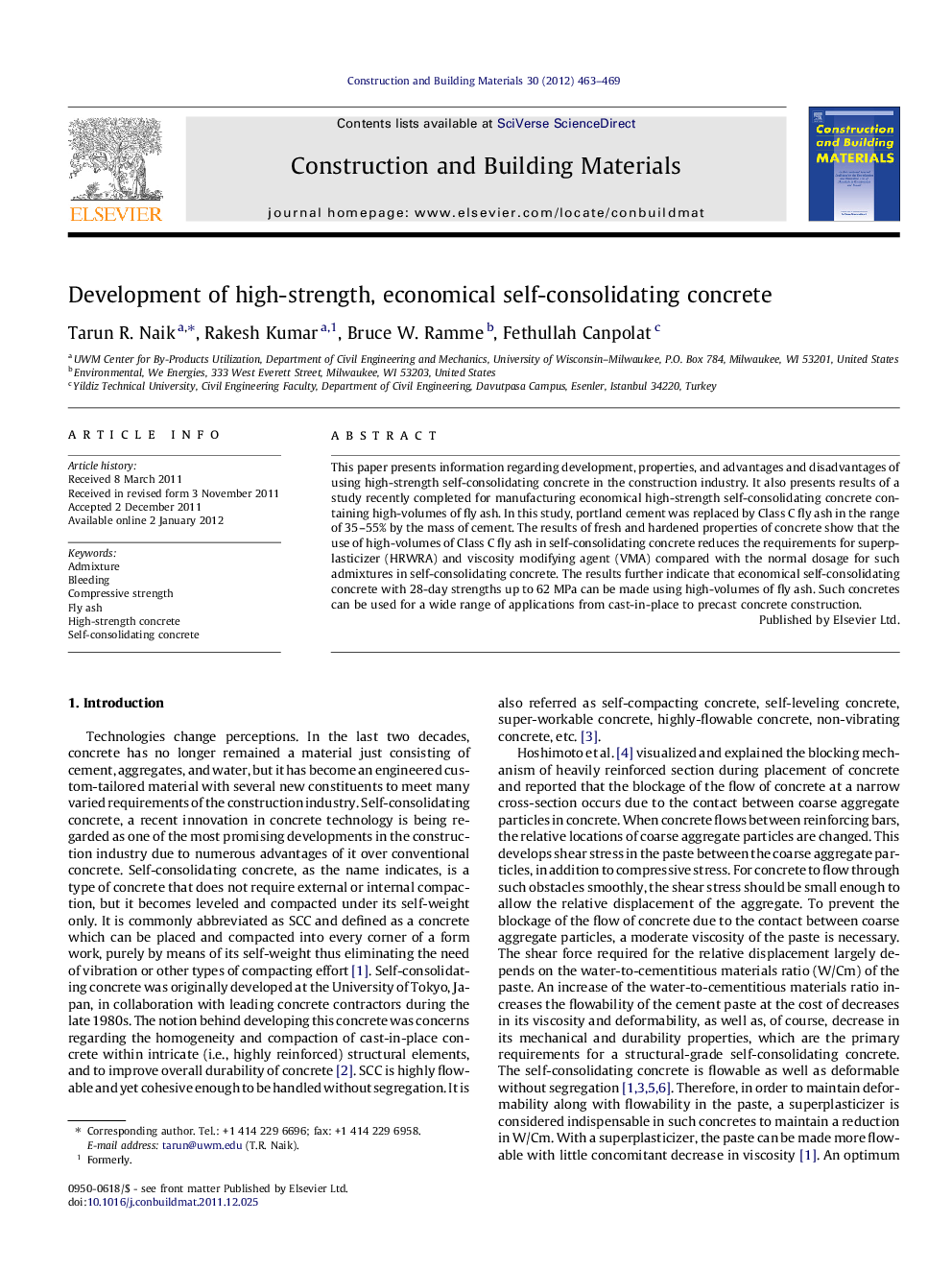| Article ID | Journal | Published Year | Pages | File Type |
|---|---|---|---|---|
| 258544 | Construction and Building Materials | 2012 | 7 Pages |
This paper presents information regarding development, properties, and advantages and disadvantages of using high-strength self-consolidating concrete in the construction industry. It also presents results of a study recently completed for manufacturing economical high-strength self-consolidating concrete containing high-volumes of fly ash. In this study, portland cement was replaced by Class C fly ash in the range of 35–55% by the mass of cement. The results of fresh and hardened properties of concrete show that the use of high-volumes of Class C fly ash in self-consolidating concrete reduces the requirements for superplasticizer (HRWRA) and viscosity modifying agent (VMA) compared with the normal dosage for such admixtures in self-consolidating concrete. The results further indicate that economical self-consolidating concrete with 28-day strengths up to 62 MPa can be made using high-volumes of fly ash. Such concretes can be used for a wide range of applications from cast-in-place to precast concrete construction.
► Information is presented regarding use of high-strength self-consolidating concrete. ► Advantages and disadvantages of using self-consolidating concrete are discussed. ► Use of high-volumes of fly ash in the manufacturing of self-consolidating concrete is shown to be preferred. ► The addition of Class C fly ash is shown to be economical and reduces superplasticizer dosage. ► Self-consolidating concrete can be used for precast concrete construction.
